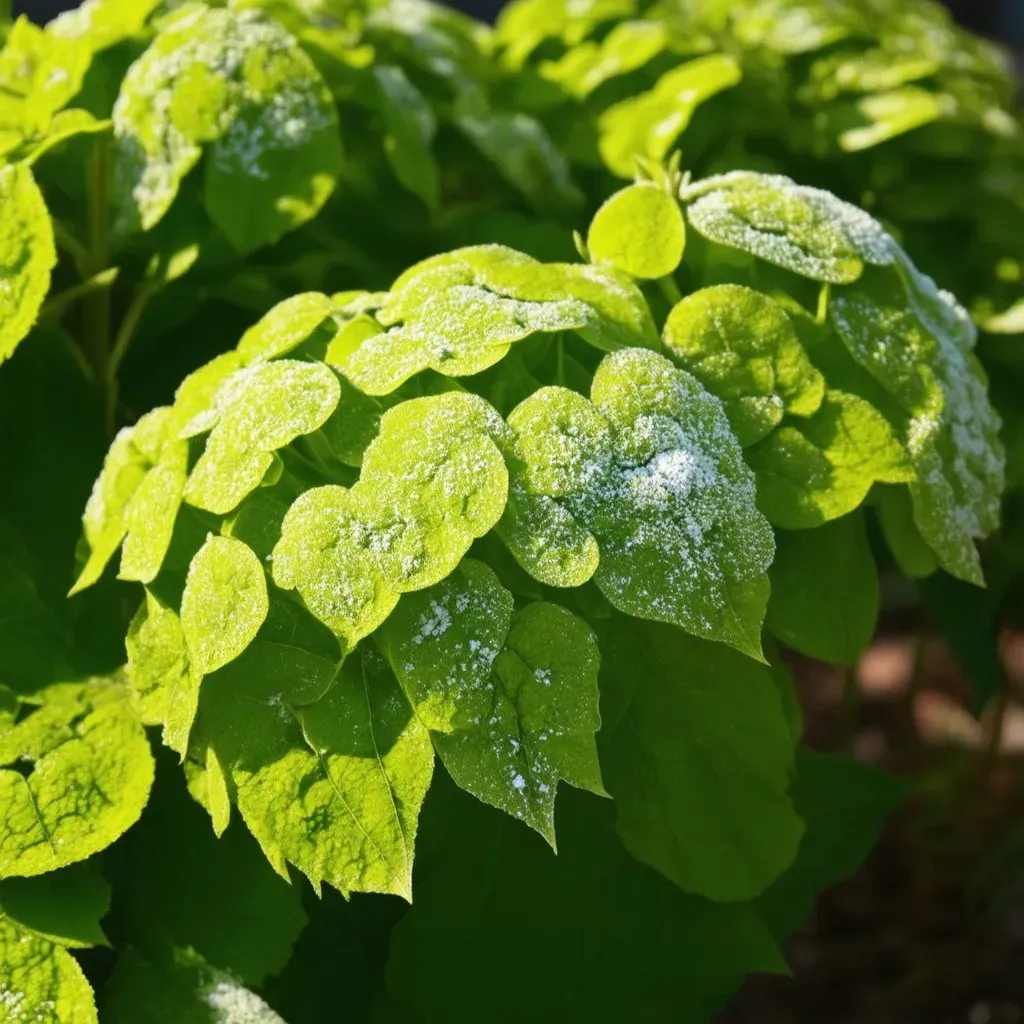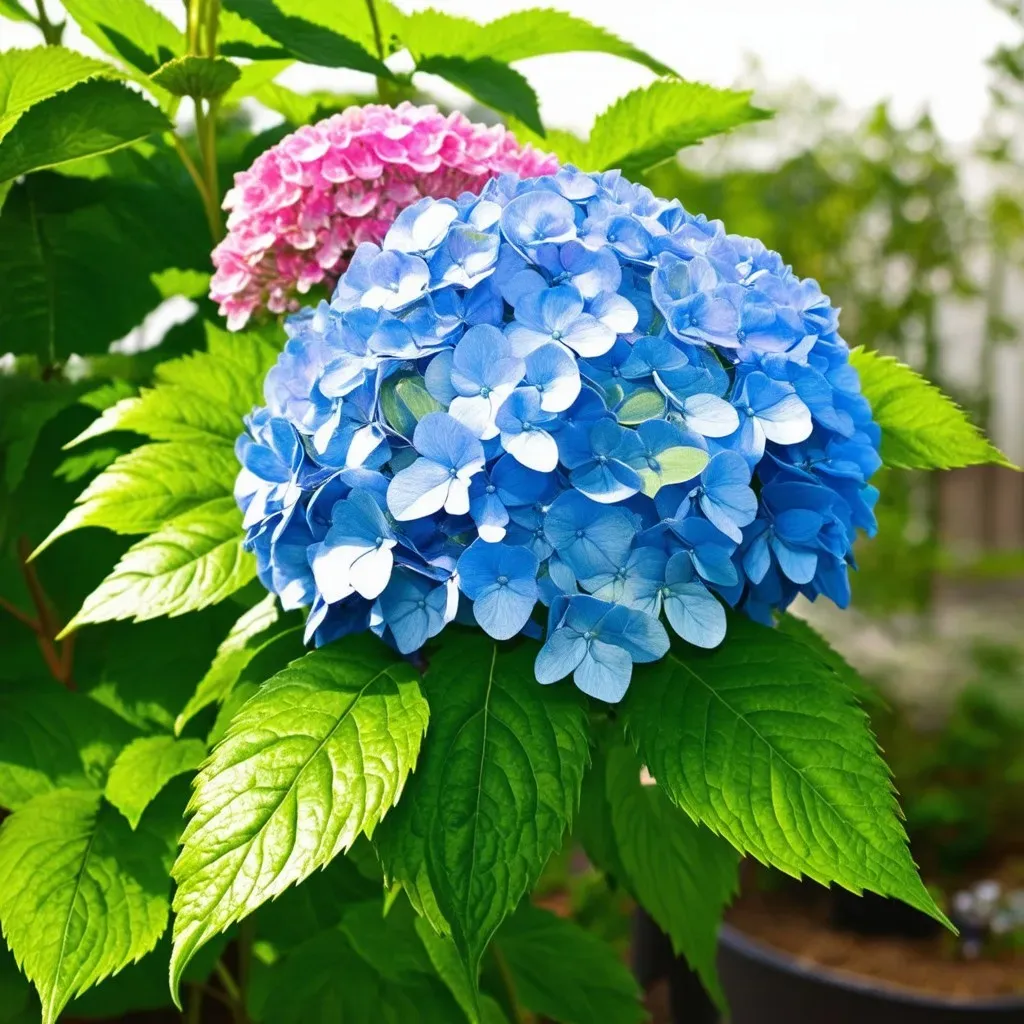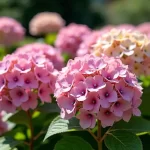Powdery mildew hydrangea refers to a common fungal disease that affects hydrangeas, causing white, powdery growth on leaves and stems. This unsightly problem can result in poor plant health and diminished aesthetics but can be effectively managed with the right strategies.
Understanding Powdery Mildew: Symptoms and Causes
Powdery mildew typically appears as a dusty or cotton-like white or gray coating on the upper surfaces of leaves and stems. The disease can spread rapidly under specific conditions, particularly during warm days and cool nights. While it is often considered unsightly, powdery mildew usually does not kill hydrangeas but can lead to stunted growth and reduced flowering.
Key Symptoms:
- White or gray powdery splotches on leaves
- Yellowing or browning of infected areas
- Distorted leaf growth over time
- Premature leaf drop
Table: Common Causes of Powdery Mildew on Hydrangeas
| Cause | Description |
|---|---|
| Poor air circulation | Crowded plants inhibit airflow, creating humidity |
| Shade conditions | Fungi thrive in shaded, moist environments |
| Excess moisture | Overhead watering can lead to unnecessary dampness |
| High humidity | Humid conditions promote fungal growth |
Identifying Powdery Mildew on Hydrangea Leaves
When dealing with powdery mildew, gardeners may notice the following changes on hydrangea leaves:
- Hydrangea Leaves Turning White: The first noticeable symptom is white patches that look like dust.
- Hydrangea White Leaves: This refers to leaves that develop a complete white appearance due to the fungal growth.
- White Leaves on Hydrangea: Along with the powdery substance, leaves may also exhibit yellowing or browning as the disease progresses.
Recognizing the Pathogen
The most common pathogens responsible for powdery mildew in hydrangeas include:
- Golovinomyces orontii (formerly Erysiphe polygoni)
- Erysiphe poeltii
- Microsphaera friesii
- Oidium hotensiae
The spread of these fungi is facilitated by unfavorable environmental conditions, such as high humidity and stagnant air, further stressing the plant and increasing vulnerability to Other diseases.
Reference Video
Treating Powdery Mildew on Hydrangeas
Effective management of powdery mildew involves a combination of cultural practices, fungicidal treatments, and preventative measures.
1. Cultural Practices
- Increase Airflow: Space out plants to ensure adequate air circulation. Avoid planting hydrangeas too closely together.
- Pruning: Regularly prune your hydrangeas to promote better airflow and remove any infected leaves or stems.
- Watering Techniques: Water at the base of the plant to keep foliage dry. Early morning watering is preferable to allow for quick drying of any moisture on the leaves.
- Sunlight Exposure: Ensure that hydrangeas receive enough sunlight as fungi thrive in shady regions.
2. Fungicidal Treatments
If cultural practices do not sufficiently manage the disease, fungicides can be applied. Here are options to consider:
| Fungicide Type | Application Notes |
|---|---|
| Neem Oil | Natural fungicide; effective when applied regularly |
| Sulfur | Use for established infections; repeat application |
| Copper-based fungicides | Effective but should be used with caution |
| Baking soda solution | Non-toxic, mix with water and spray on leaves |
3. Preventative Measures
- Regular Inspections: Routinely check your hydrangeas for early signs of powdery mildew, especially during the growing season.
- Balanced Fertilization: Over-fertilizing can increase susceptibility to powdery mildew. Follow recommended fertilization practices.
- Mulching: Use mulch to manage soil moisture levels and temperature, which can impact the humidity around the plant.

FAQ on Powdery Mildew and Hydrangeas
Q: Can powdery mildew be harmful to my hydrangeas?
A: While powdery mildew typically does not kill hydrangeas, it can weaken the plant, reduce its vigor, and impact flowering.
Q: How can I differentiate powdery mildew from other hydrangea diseases?
A: Powdery mildew distinctly appears as a white, powdery coating, while other diseases may manifest with spots or decay without the signature powdery texture.
Q: Is there a natural remedy for treating powdery mildew?
A: Yes, neem oil and a mixture of baking soda and water are effective natural treatments against powdery mildew.
Q: Should I remove infected leaves immediately?
A: Yes, promptly removing infected leaves can help control the spread of powdery mildew to healthy areas of the plant.
Q: What are the best conditions to avoid powdery mildew?
A: Ensuring good air circulation, avoiding excessive moisture, and providing adequate sunlight can help prevent powdery mildew.
Summary of Management Techniques
| Management Technique | Description |
|---|---|
| Regular Pruning | Enhances airflow and removes infected sections |
| Proper Watering | Prevents leaf wetness and maintains ideal moisture level |
| Fungicide Application | Targets existing infections; use applied as directed |
| Environmental Adjustments | Modify conditions to reduce humidity and increase sunlight |
| Early Detection | Monitor plants regularly for any symptoms of disease |
Incorporating these techniques will help maintain the beauty and health of your hydrangeas, allowing them to thrive even in the face of potential diseases such as powdery mildew.
For more in-depth information and guidance on managing powdery mildew in hydrangeas, you can refer to Gardening Know How.

By implementing proactive care and responsive treatment, you can effectively combat powdery mildew and enjoy flourishing, vibrant hydrangeas year after year.


